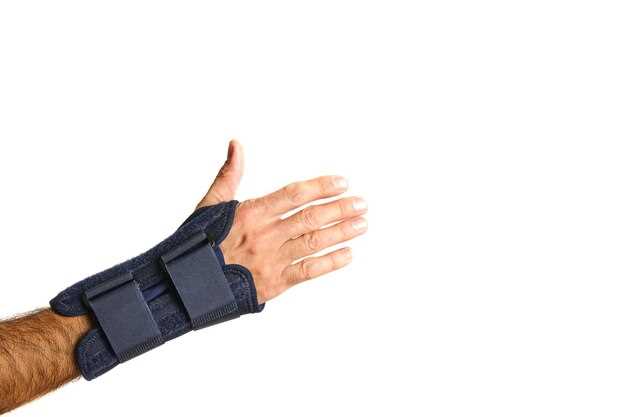
Symptoms of a worn control arm bushing
- Dominique Kaye
- 0
- Posted on

The control arm bushings play a crucial role in ensuring the stability and performance of your vehicle’s suspension system. These components act as a buffer between the control arm and the vehicle’s frame, allowing for controlled movement and reducing vibrations. Over time, however, the constant stress and exposure to road conditions can lead to wear and tear, necessitating replacement.
Identifying the need for new bushings is essential to maintain optimal suspension performance. Symptoms such as a clunking noise when driving over bumps, excessive tire wear, or noticeable changes in steering responsiveness can all indicate that your control arm bushings are no longer functioning effectively. Ignoring these signs can lead to more significant issues, including compromised safety and increased repair costs.
In this article, we will explore the key indicators that suggest it may be time to replace your worn control arm bushings. Understanding these signs will empower you as a vehicle owner to act promptly and ensure that your suspension system operates smoothly and efficiently.
Unusual Noises When Driving: A Clear Indication of Bushing Wear
One of the most telling signs of worn control arm bushings is the presence of unusual noises while driving. These sounds can manifest as clunks, rattles, or creaks, particularly when navigating bumps, turns, or uneven road surfaces. The control arm bushings play a crucial role in your vehicle’s suspension system, allowing for smooth movement and alignment. When these components begin to deteriorate, they lose their ability to absorb shocks effectively, leading to an increase in noise.
As the bushings wear down, metal parts can come into contact with each other, creating audible signs of strain. You may notice that these sounds become more pronounced during specific driving situations, such as accelerating or hitting potholes. If you hear these noises consistently, it indicates that the bushings are no longer providing the necessary support and that wearing is likely to be significant.
Ignoring these noises can lead to further suspension damage and a decrease in vehicle handling and safety. Therefore, if you experience unusual sounds while driving, it is advisable to have your suspension system, particularly the control arm bushings, inspected promptly to assess their condition and prevent more severe issues down the line.
Impact on Vehicle Handling: Recognizing Reduced Stability and Control

Worn control arm bushings can significantly affect your vehicle’s handling, leading to decreased stability and control. Recognizing the signs of wear is crucial for maintaining optimal performance and safety.
Here are some common indicators of reduced stability and control due to worn bushings:
- Excessive Vibration: Noticeable vibrations while driving, especially at higher speeds, can indicate that the suspension components, including bushings, are no longer functioning effectively.
- Wandering Steering Wheel: If your steering feels loose or if the vehicle tends to drift to one side, it may be a sign of uneven wear in the bushings that compromises alignment.
- Poor Cornering Stability: Difficulty in maintaining a smooth line during turns suggests that the suspension is not responding properly due to degraded bushings.
When bushings wear out, they lose their ability to absorb impacts and maintain the right alignment of the suspension components. This can lead to:
- Increased Tire Wear: Uneven tire wear patterns may emerge, leading to premature replacement of tires and affecting overall traction.
- Safety Risks: Reduced control can significantly increase the risk of accidents, especially in emergency maneuvers.
- Compromised Ride Comfort: A sudden increase in bumps and road imperfections will affect the overall driving experience, making it uncomfortable.
Promptly addressing worn control arm bushings is essential to restoring the stability and control of your vehicle. Timely replacement ensures that your suspension system functions effectively, providing a safe and comfortable ride.
Visual Inspection: What to Look for to Identify Damaged Bushings

When performing a visual inspection of your vehicle’s suspension system, focus on the control arm bushings, which play a crucial role in maintaining alignment and absorbing vibrations. Look for signs of wear, such as cracks, tears, or significant deformation in the rubber material of the bushings. Any visible deterioration could compromise their functionality, leading to a less stable driving experience.
Check for uneven gaps around the bushings where they connect to the control arms and the chassis. If the bushings appear to be shifting or have excessive play, this indicates they may be worn out. Additionally, inspect for any unusual corrosion or rust, as this can weaken the material and impact its effectiveness in dampening vibrations.
Pay attention to any fluid leaks near the bushing area, especially if your vehicle is equipped with hydraulic-style bushings. Leaking fluid can signal internal damage and requires immediate attention. Furthermore, listen for abnormal noises during driving, such as clunks or rattles, which could also suggest that the bushings are no longer functioning as intended.
Assess the overall condition of the suspension components in proximity to the bushings. If you notice excessive wear on surrounding parts, this may be indicative of failing bushings affecting the entire suspension system. Regular visual inspections are essential in identifying potential issues early, ensuring your vehicle remains safe and performs optimally.
